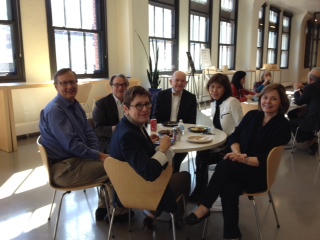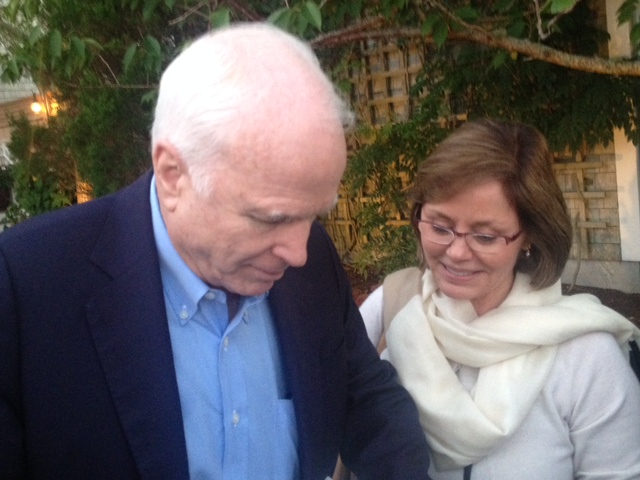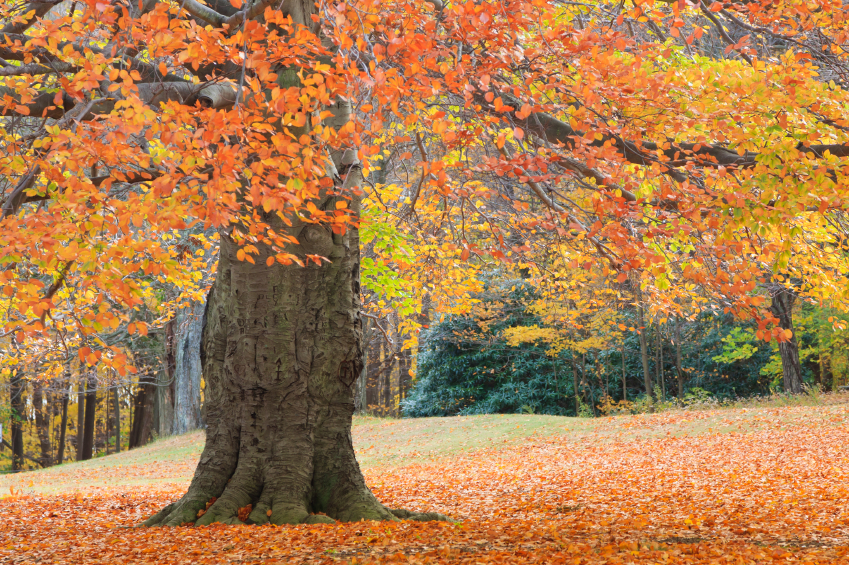Earlier this month, I participated in the Leadership Summit for Sustainable Design, hosted by the Design Futures Council, as a member of the Delegation of 100. The Summit was an amazing gathering of leaders in the sustainable design movement, who share a belief in our ability to shift the relationship between humans and the environment, and to create systems that are truly sustainable.
My involvement with the Design Futures Council is one of several commitments I have in place to work toward a more sustainable earth. It encompasses both my “green” design work and my dedication to educating my clients and readers, as well as a personal passion for protecting the environment.
Held this year in Minneapolis (guess whose statue this is!), the participants and speakers inspired me to believe in a future for our children and grandchildren that can support both the growing numbers of humans on the planet as well as the fragile environment we live in.
I’ve heard the term “a conga line of geniuses and scientists” applied to the Ted Conferences before; it certainly applied to the Summit as well. It was hard to choose what is most important to share from such a list of exemplary individuals, all who exhibit such “intellectual rigor” (one of the bywords of the conference!). I finally chose architect and author Ed Mazria, for his work with his organization Architecture 2030. It’s so important for all of us to understand what’s at stake in the world, and what we can do to help!
I am greatly concerned, along with leading environmental scientists, about climate change and global warming. The risk to us all, and to future generations, is in doing business as usual. We need to make changes to bring the world’s temperatures back to where they were in the pre-industrial era; at the very least we must keep our global warming to under a 2 degree increase.
The architecture and design community must take the lead in transforming the way we live, work, and utilize the eco-system. Our built environments must reflect a genuine concern for the next generations, and a willingness to engage with government, business leaders and public policy to find the right balance.
Mr. Mazria has reshaped the international dialogue on energy and climate change to incorporate building design through his organization Architecture 2030.
Architecture 2030 recognizes that buildings are the major source of global demand for energy and materials that produce by-product greenhouse gases. Mr. Mazria’s impassioned support for innovative sustainable design strategies is leading a new generation of concerned industry leaders to embrace his vision for the future.
Specifically, Mr. Mazria has emphasized the need to keep the global temperature increase below the two degree centigrade threshold. Entire species disappear when the temperature changes only a fraction of a degree. The recently released Intergovernmental Panel on Climate Change’s (IPPCC) Fifth Assessment Report concludes that to keep the increase below two degrees, global greenhouse emissions must peak by 2020, and then begin a rapid decline.
Mr. Mazria has focused on China, currently urbanizing at a rate unmatched in human history, as an opportunity to create healthy, resilient and integrated regional infrastructures, cities, towns and buildings that are models of economic and urban sustainability. Projections indicate that within 20 years, China’s urban population will grow by 350 million people, creating 221 cities with more than one million inhabitants. In order to take advantage of the opportunity to plan and design sustainable, carbon neutral built environments that protect and enhance natural resources, Mr. Mazria and Architecture 2030 are working toward a carbon neutral China Accord.
The China Accord urges that cities, towns, urban developments, new buildings and major renovations in China be designed to be carbon neutral, meaning they use no more energy over the course of a year than they produce or import from renewable energy sources. If reaching carbon neutral is not practical, then they urge developments to be designed to be highly efficient with the capability to use renewable energy sources in the future.
Architecture 2030 is organizing signatures from all those who have offices in China, or current or future plans for projects in China, to add their signatures and pledges to the Accord, to influence urban development in China and throughout the world. More information is available at architecture2030.org.
Architecture 2030 isn’t just concerned with China, however. Mr. Mazria’s 2030 Challenge is about reducing the carbon footprint of architecture everywhere, first by eliminating the use of fossil fuels in new construction, and then by cutting the use of fossil fuels in existing buildings by 50% by 2030. He plans to hit those targets through a new initiative called the 2030 PALETTE: an online design tool to help produce low impact, people friendly projects.
For instance, this “green” school utilizes daylighting from multiple sides to cut energy consumption. It provides more even lighting, and reduces glare, often created when light comes primarily from one side. The online tool gives advice on how to properly daylight a building, from providing windows on opposite walls, to incorporating high ceilings and walls with light shelves to direct sunlight deeper into a space.
The online tool provides information ranging from the micro–daylighting in buildings–to the macro–defining growth boundaries to limit urban sprawl. The work of Architecture 2030 is critical to our future, and will help to determine whether climate change is manageable or catastrophic.
Important work is being done by other concerned groups as well. In late September, I attended the annual conference of The Nantucket Project, an organization that hosts a gathering of some of the world’s leading thinkers and visionaries to help shape the dialogue on the most important issues we face. I was gratified to attend this year along with Senator John McCain, Chris Matthews, Greg LeMond, Michael Pollan, Louis Schwartzberg, and many others for presentations, discussions and education from experts in a variety of fields.
Here I am with John McCain at The Nantucket Project
I learned so much at both of The Nantucket Project and the Leadership Summit; there’s so much more I wish I could share with you. Here are three more inspirations:
Check out Jim Harris, the author of A Crisis is a Terrible Thing to Waste. The book presents hundred of case studies showing how environmental leadership can drive profitability and improve the bottom line.
And available through Netflix, there is a must-see documentary film called Chasing Ice. It’s environmental photographer James Balog’s record of the world’s changing glaciers, captured through time-lapse photography. He compresses years into seconds to show how these ice mountains are disappearing at an alarming rate.
Last, please watch the film Nature’s Beauty Inspires Gratitude, a short film by award-winning cinematographer Louie Schwartzberg shown at a TEDx talk. His time lapse photography captures breathtaking images through, as he says, “beauty and seduction–nature’s tools for survival.” I was so moved by his film treatise on water, “One Drop.” I hope it becomes widely available for viewing soon.
Our world is vast and fragile, and climate change is real and deadly. I”ll continue to share my thoughts on how we can take action together. I’d love to hear your thoughts, too.
















